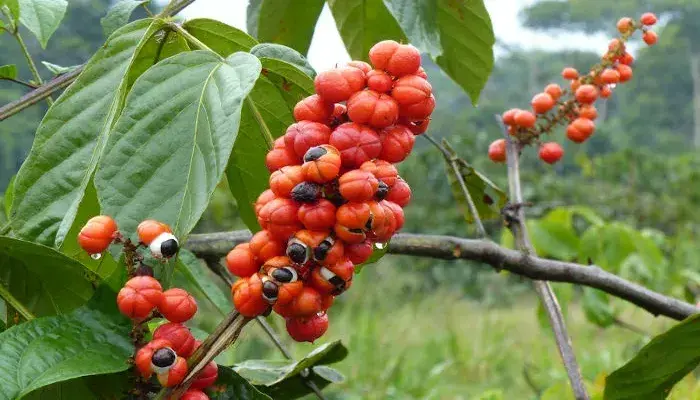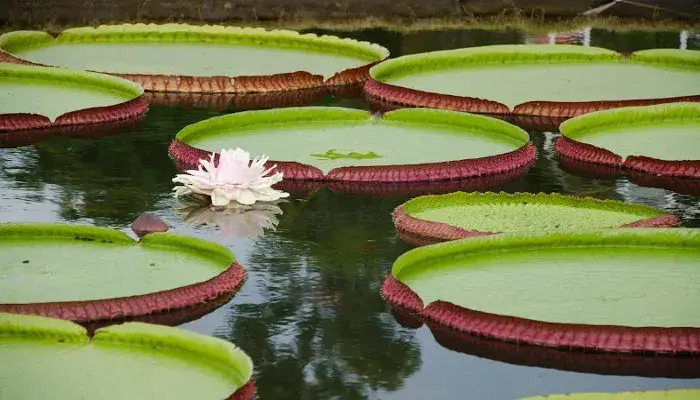The Amazon is one of the richest biomes on the planet in terms of biodiversity. Its rainforest is home to a huge variety of plant species, each with unique and valuable characteristics. In this article, we are going to explore some of these Amazonian plants and highlight their importance for the region and the world as a whole. It is really worth understanding and finding out about the diversity of plants in the Amazon, a wealth of our country.
The plant diversity of the Amazon
Responding to this topic, we can say that the Amazon rainforest is blessed with an extremely diverse and exuberant flowering. Many of these plants are valuable to humans, used to manufacture furniture and houses, food, cosmetics and even medicines.
According to the Ministry of the Environment, there are around 2,500 species of trees in the Amazon, representing one third of the tropical wood in the world, and 30,000 (thirty thousand) species of plants, among the 100,000 (one hundred thousand) ) existing in South America. The rubber tree, for example, is an important source of latex, which is used in the production of rubber.
Among the trees present in the Amazon, the imposing samaúma stands out, which can reach up to 50 meters in height and 2 meters in diameter. Its wood is highly valued in the market, which has resulted in its intense exploitation over the years.
Other plants found in the Amazon rainforest include guarana, cupuaçu, cocoa, mahogany, and rubber tree. Of the latter, it is noteworthy for being the source of latex used in the production of rubber, which gives it great commercial value. In addition, the Amazon rainforest is also rich in smaller plants, such as vines, vines and epiphytic plants.
The Medicinal Plants of the Amazon
The Amazon is known for its wide variety of medicinal plants, many of which have been used for millennia by indigenous peoples to treat a wide range of ailments. To this day, many of these plants are widely used in traditional medicine and have been the subject of scientific research to prove their effectiveness. There are more than 40 thousand species of plants there.
Therefore, we will highlight some of the most common medicinal plants:
- Turmeric: known for its anti-inflammatory and immune-boosting properties, it is also used to treat digestive problems, headaches and other ailments.
- Jaborandi: is used to treat skin problems such as eczema, as well as respiratory and cardiovascular problems.
- Leather hat: it is used to treat problems such as arthritis, rheumatism and kidney problems in addition to headaches and insomnia.
These are just some of the medicinal plants found in the diversity of Amazonian plants, and it is important to highlight that many others still need to be studied and understood. Scientific research around these plants could lead to the development of new drugs and more effective treatments for a wide range of ailments.
The Food Plants of the Amazon
In addition to its richness in medicinal plants, the Amazon is also rich in food plants. Many of them are cultivated by indigenous peoples and are important sources of food and income.
Here we will highlight some of the most common food plants in the Amazon:
- Guarana: is a fruit rich in vitamins and minerals and stimulants, it is widely used in local cuisine.
- Acai: is a fruit known for its antioxidant properties also used to make juices, ice cream and other healthy foods.
- Cupuaçu: is a fruit with a unique flavor that is used to make ice cream, jellies and other products.
- Cocoa: the fruit that gives rise to chocolate, a powerful antioxidant and is highly profitable.
In addition to being important sources of food, these plants also have great potential for the region’s economy, as they can be exported to other parts of the world. The Amazonian food industry is in constant growth and it is important to support it in a sustainable way, to guarantee the preservation of the region’s biodiversity.
The Ornamental Plants of the Amazon
The Amazon is also rich in ornamental plants, many of which are unique and found only in the region. These plants are widely used to decorate gardens, parks and other green spaces, and are valued for their beauty and diversity.
A highlight of some of the most common ornamental plants in the Amazon follows:
- Bromeliads: are plants with colorful flowers and are widely used in gardens and parks.
- Orchids: are plants known for their beauty and diversity, and are widely used in gardens and for decorative purposes.
- Palm trees: these are tall and imposing plants, and are widely used in gardens and landscaping.
The diversity of ornamental plants in the Amazon is truly impressive, and it is important to value and preserve them for future generations.
How important is the Amazon rainforest?
The Amazon rainforest is home to an immense variety of trees of enormous importance to the biome, such as açaí, rubber tree, andiroba, peach palm, mahogany, cedar, cocoa, cupuaçu, guarana and tucumã. They are extremely valuable to local communities, playing important roles in food, income generation, extraction of wood, resins and latex, medicinal and ritualistic use, in addition to being present in popular culture, through tales, legends and stories.
An emblematic flower of the Amazon is the water lily, which is considered one of the largest aquatic plants in the world. In addition, it has medicinal and culinary uses, in addition to its flower, of unique beauty, being a source of inspiration for popular legends. According to one of these legends, a young indigenous woman who greatly admired the Moon disappeared after trying to touch her reflection in the water of a river. The Moon, feeling sorry for her, transformed her into a giant flower, the water lily, whose petals open in the waters to receive the moon’s light.
Conclusion
The Amazon is one of the richest regions on the planet in terms of biodiversity, and its plants are an important part of that. Whether medicinal, food or ornamental, each of these plants has its own history and value, and it is important to value and preserve them. Scientific research around these plants can lead to the development of new medicines, foods and products, in addition to helping to preserve the Amazon’s biodiversity for future generations. We hope you enjoyed reading and learned a little more about this enchanting theme that is the Amazon Forest. Be sure to check out more exclusive and daily content on our blog. See you next time!



